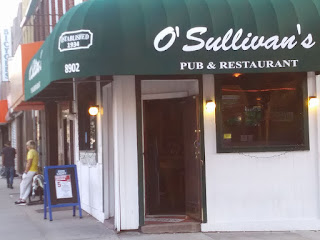Fire Fight
 Illustration by Greg Bellamy
Illustration by Greg BellamyOne of the first things a reporter does when arriving at a major fire scene is find the guy in the white helmet.
That’ll be the fire chief and he’s the one who will help you make some sense out of all the mayhem. Or at least you hope he will.
I covered many fires during my five years as a police reporter in Pennsylvania.
There were blazes where people died, where there was nothing left of the building but the foundation; one time a gas explosion destroyed an entire church in Stroudsburg.
But I think the biggest fire I ever covered in all those years chasing sirens was the blaze that destroyed the Salvation Army Thrift Center in East Stroudsburg nearly 20 years ago.
The building was huge and it was filled with old clothes, furniture and other second hand items. One night all of that stuff quiet literally went up in flames—and I was right there.
Many of the fires I wrote about happened in some distant part of my coverage area. Often by the time I arrived the firefighters had brought the fire under control—“knocked it down,” as they liked to say.
Sometimes the fires broke out in the dead of night when I was home in bed, so the only thing I saw on the morning after was smoking rubble.
But the Salvation Army fire was only a five-minute drive from my office and it broke out shortly after I returned from my dinner break.
Things had been quiet all day—I believe it was a Saturday and there were only a few people in the newsroom. I was hoping it would stay quiet so I could go the hell home.
But then the fire alarm in East Stroudsburg went off and it kept going and going. It went on for so long that people were calling the paper to find out what was happening. By that time I was driving down Lower Main Street and heading over the Interborough Bridge to East Stroudsburg.
A crowd had already formed across the street from the thrift center and firefighters from Acme Hose No. 1 were setting up equipment around the building.
No flames were visible yet, but a heavy stream of smoke was pouring out of the thrift center like a runaway smokestack. I figured things were bad, but I had no idea how bad they were going to get.
The crowd was actually in a pretty good mood. Sure the fire was terrible, but this was event, a break from the routine. There was almost a carnival feeling in the air.
The building had four large windows and as I stood with the crowd I watched each of them slowly turn black from the soot forming on the opposite side of the glass as the fire intensified.
And then the windows started to explode—crack! crack!-one right after the other, and a wave of heat, like a force field, surged out of the building and rolled right into the crowd.
Everyone suddenly fell silent and people seemed to take one unified step backward. This thing was for real.
Flames started to break through the roof and some of the volunteers climbed up on a new platform truck so they could attack the fire without having to stand on the burning building.
Acme Hose had recently acquired this massive piece of equipment and tonight it was making its debut.
The volunteers were hosing down the thrift center from the platform truck when the flames suddenly jumped up like a wild animal breaking out its cage. The firefighters staggered down the ladder to escape the incredible heat and I remember thinking, Jesus, even these guys are backing away from this thing.
Bill Miller was the chief of the Acme Hose Co. at that time and he was there with his white helmet and fire coat. I saw him standing with a group of his top men, “the sole figure in white,” I later wrote. He looked like a general conferring with his officers in the middle of an intense battle.
The flames climbed straight into the sky and from where I was standing I could see one fire truck after another racing over the bridge as fire companies from the surrounding area sent reinforcements.
The Salvation Army canteen, a kind of rolling kitchen, always responded to disasters and this night was no different. Even though they were losing a valuable piece of property and a source of revenue, they were out there doing whatever they could to help the firefighters. I interviewed the man in charge of the canteen right there while their building burned.
The volunteers eventually got the blaze under control, knocked it down, but the building was a total loss. I ran back to the paper and banged out the story so quickly I couldn’t believe it.
I had seen so much of what had happened that I didn’t feel the need to get a lot of quotes from witnesses. I was a witness myself.
The state police fire marshal later ruled the fire had been caused by some problem with the building’s electrical system.
I haven’t been back that way in years, but I understand the Salvation Army has a new thrift center at that spot. I’m a business reporter now, so I don’t cover fires anymore and I no longer search for the man in the white helmet.



Comments